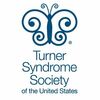Chronic Diseases
Chronic diseases affect 133 million Americans nationwide and many live with more than one of these diseases. Learn more about some of these illnesses as well as navigate to partner organizations below.Achondroplasia
Achondroplasia is a genetic condition affecting a protein called the fibroblast growth factor receptor, which is found in the bone growth plates and other tissues in the body. In achondroplasia, this protein functions incorrectly, leading to shorter, abnormally-shaped bones and shorter stature, as well as symptoms that impact many body systems. Adult height in people with achondroplasia is between 42 and 56 inches.
ALS
Alzheimer’s disease
An estimated 5.5 million Americans have Alzheimer’s disease, a type of dementia that causes problems with thinking, memory and behavior. While there is no known cure, treatments, when accessible, can slow the disease’s onset and improve the quality of life for patients and their caregivers.
Andersen Tawil Syndrome
Ankylosing Spondylitis
Atrial Fibrillation
Autoimmune Polyendocrine Syndrome Type 2
Cancer
About 21 million Americans have been diagnosed with cancer, and it isn’t always a one-time event. Ovarian cancer, leukemia and some types of lymphoma might be treated but could still come back eventually. Medical treatment can be costly and is necessary to prevent cancer’s growth or spread.
Cardiomyopathy
Cardiomyopathy is a disease of the heart muscle that makes it harder for the heart to pump blood to the rest of the body. Cardiomyopathy can lead to heart failure. The disease may be inherited or acquired, and its severity can range from mild to severe.
Celiac disease
Cerebral Palsey
Cholangiocarcinoma (Bile duct cancer)
Chronic Inflammatory Demyelinating Polyneuropathy
Chronic Kidney Disease
Chronic Megacolon
Chronic obstructive pulmonary disease (COPD)
Chronic obstructive pulmonary disease (COPD) is a chronic inflammatory lung disease that causes obstructed airflow from the lungs. Symptoms include breathing difficulty, cough, mucus (sputum) production and wheezing.
Colitis
Complement 3 Glomerulopathy (C3G)
C3G stands for complement 3 glomerulopathy. The “C3” refers to a blood protein that plays a key role in normal immunity and in the development of this disease.
Complex Post-Traumatic Stress Disorder
Contact Dermatitis
Craniocervical Instability
Crohn’s Disease
Cystinuria
Degenerative Disc Disease
Degenerative Joint Disease
Dermatitis
Diabetes
Medical costs are twice as high for the 29.1 million adults and children with diabetes compared to those who do not. Diabetes is a disease in which the body’s ability to produce or respond to insulin is impaired, resulting in high blood sugar levels. There is no known cure, but medical devices and therapies help to control and treat or prevent diabetes complications.
Diabetes Mellitus
Dysautonomia
Dysautonomia is a disorder of autonomic nervous system (ANS) function. The ANS is charge of involuntary functions — things that happen without thinking — like breathing. Dysautonomia usually involves failure of the sympathetic and parasympathetic parts of the ANS. The disorder can include many different health conditions caused by problems with the ANS. Dysautonomia can involve failure of parts of the ANS as well as too much activity. It can show up in the body in different ways.
Endometriosis
Endometriosis is an often-painful disorder in which tissue similar to the tissue that normally lines the inside of your uterus — the endometrium — grows outside your uterus. Endometriosis most commonly involves your ovaries, fallopian tubes and the tissue lining your pelvis.
Epilepsy
Access to care and appropriate medical treatments is critical to the health, family and employment of patients with epilepsy, a chronic neurological condition characterized by seizures. People with epilepsy frequently encounter barriers with their health insurance coverage as well as discrimination at school and in the workplace.
Femoroacetabular impingement (FAI)
Fibroids
Focal Segmental Glomerulosclerosis
GERD
Growth Hormone Deficiency: Pediatric & Adult
Growth hormone deficiency (GHD) is a condition where the body doesn’t make or release enough growth hormone from the pituitary gland to support growth and other functions in the body like metabolism and mental processing. GHD can be caused by a genetic mutation, damage to your pituitary gland, or other reasons, and can be treated by replacing growth hormone. The effects of GHD include delayed growth and short height in children and metabolic issues in adults.
Headache disorders
Headache disorders, characterized by recurrent headache, are among the most common disorders of the nervous system. Headache itself is a painful and disabling feature of a small number of primary headache disorders, namely migraine, tension-type headache, and cluster headache.
Heart disease
Cardiovascular disease, or heart disease, is a term that includes many different heart-related problems, most of which being related to atherosclerosis – a condition that can lead to a heart attack or stroke. Patients with heart conditions need access to the therapies and treatments their doctors prescribe to manage their disease and to avoid a heart event or death.
Heart Failure
Hemifacial Spasm
Hemophilia
Affecting 20,000 Americans and 400,000 people worldwide, hemophilia is a bleeding disorder in which the blood does not clot properly. While it is a lifelong condition, it can be managed through treatments such as regular infusions that help to control bleeding. Unfortunately, insurance companies may try to reject coverage for patients because of the high costs of treating this chronic disease.
Hereditary hemorrhagic telangiectasia
Hereditary Pancreatitis
Hereditary pancreatitis (HP) is a condition associated with recurrent pancreatitis and an increased risk of pancreatic cancer. Recurrent pancreatitis is an inflammation of the pancreas that keeps coming back over time.
HIV
HIV (human immunodeficiency virus) is a virus that attacks the body’s immune system, weakening the body’s ability to fight off infections and disease. With appropriate treatment, it can be managed long-term, but insurance companies have discriminated against HIV patients by putting their needed drugs in different price tiers.
Hyper Mobility Syndrome
Hyperandrogenism
Hyperlipidemia
Hypermobile Ehlers-Danlos Syndrome (hEDS)
hEDS is a heritable connective tissue disorder that causes generalized joint hypermobility, joint instability, and chronic pain. hEDS is also associated with a variety of other symptoms and related conditions that affect many different areas of the body.
Hypertrophic Cardiomegaly
Hypertrophic Cardiomyopathy
Hypogammaglobulinemia
Hypoparathyroidism
Hypoparathyroidism is a rare condition in which the body does not produce or produces abnormally low levels of parathyroid hormone (PTH). Hypoparathyroidism most often occurs as an unintended result of neck surgery but also has non-surgical causes. The insufficient production of PTH in hypoparathyroidism disrupts the regulation and balance of two important minerals, calcium and phosphate, in the body. This imbalance leads to abnormally low levels of calcium and high levels of phosphate in the blood.
IBD
Inflammatory Bowel Disease (IBD) is a broad term that describes conditions characterized by chronic inflammation of the gastrointestinal tract. The two most common inflammatory bowel diseases are ulcerative colitis and Crohn’s disease. Approximately 1.6 million Americans are living with IBD.
Idiopathic Intercranial Hypertension
Idiopathic Intracranial Hypertension with Papilledema
Inappropriate Sinus Tachycardia
Insomnia
Intestinal Metaplasia
Kidney Disease
Chronic kidney disease occurs when a person’s kidneys are unable to properly filter toxins from the blood. Patients often must undergo dialysis treatments several times each week to survive. 661,000 Americans have kidney disease, and many face discrimination by insurers looking to cut costs and increase profits. The only cure is a transplant, and post-transplant medications aren’t always covered by health plans.
Late-deafened
“Late-deafened” has a variety of meanings but typically refers to hearing loss that occurs after childhood. Individuals who are late-deafened have generally obtained oral communication skills prior to their hearing loss.
Long COVID
Some people who have been infected with the virus that causes COVID-19 can experience long-term effects from their infection, known as post-COVID conditions (PCC) or long COVID. People call post-COVID conditions by many names, including: Long COVID, long-haul COVID, post-acute COVID-19, post-acute sequelae of SARS CoV‑2 infection (PASC), long-term effects of COVID, and chronic COVID.
Lupus
Lupus is an autoimmune disease in which the body attacks healthy cells and tissues. It can affect nearly any part of your body, including the heart, joints, skin, lungs, blood, or brain. Many people with lupus also end up with additional complications involving their kidneys.
Migraine
Monoclonal Gammopothy
Multiple sclerosis
With multiple sclerosis (MS), the immune system attacks the protective sheath that covers nerve fibers and causes communication problems between your brain and the rest of the body. While this disease can be managed with treatments, it is lifelong with often painful symptoms and side effects.
Myalgic Encephalomyelitis/Chronic Fatigue Syndrome (ME/CFS)
People with ME/CFS are often not able to do their usual activities. At times, ME/CFS may confine them to bed. People with ME/CFS have overwhelming fatigue that is not improved by rest. ME/CFS may get worse after any activity, whether it’s physical or mental.
Nephrotic Syndrome
Neuralgia
Neurocardiogenic Syncope
Neurotrophic Keratitis
Osteoarthritis
Osteoarthritis is a degenerative joint disease, in which the tissues in the joint break down over time. It is the most common type of arthritis and is more common in older people. People with osteoarthritis usually have joint pain and, after rest or inactivity, stiffness for a short period of time.
Paresthesia
Partial Trisomy 8q Duplication Syndrome
Pelvic Floor Disorder
Periodic Limb Movement Disorder
Post-Traumatic Stress Disorder (PTSD)
Postural Tachycardia Syndrome (POTS)
Postural orthostatic tachycardia syndrome (POTS) is one of a group of disorders that have orthostatic intolerance (OI) as their primary symptom. OI is a condition in which an excessively reduced volume of blood returns to the heart after an individual stands up from a lying down position. The primary symptom of OI is lightheadedness or fainting.
Primary Sclerosing Cholangitis (PSC)
Psoriatic Arthritis
Pulmonary Arterial Hypertension
Pulsatile tinnitus
Rare Diseases
A rare disease is defined as a condition that affects fewer than 200,000 people in the US. There may be as many as 7,000 rare diseases and the total number of Americans living with a rare disease is estimated at between 25 – 30 million.
Restless Leg Syndrome
Rheumatic Heart Disease
Rheumatoid Arthritis
Scoliosis
Shwachman-Diamond Syndrome
Sickle Cell Disease
Sinusitis
Small fiber neuropathy (SFN)
Small fiber neuropathy (SFN) is a form of peripheral neuropathy. It happens when something damages small nerve fibers in your skin, causing symptoms like painful tingling or burning sensations in your hands and feet. The condition also can affect other small nerve fibers that manage essential body functions, like your blood pressure or heart rate.
Spondyloarthropathy
Systemic Sclerosis
Tethered Cord Syndrome
Thyroid Disease
Tick-borne autoimmune diseases
Trigeminal Neuralgia
Trigeminal neuralgia (TN), also known as tic douloureux, is a type of chronic pain disorder that involves sudden, severe facial pain. It affects the trigeminal nerve, or fifth cranial nerve, which provides feeling and nerve signaling to many parts of the head and face.
Type 1 Diabetes
Vestibular dysfunction
Vestibular dysfunction is a disturbance in the body’s balance system due to an insult to the vestibular system of the inner ear, the central nervous system processing centers, or both. Symptoms typically consist of vertigo, nausea, vomiting, intolerance to head motion, unsteady gait, and postural instability, with nystagmus often clinically apparent as well.









































